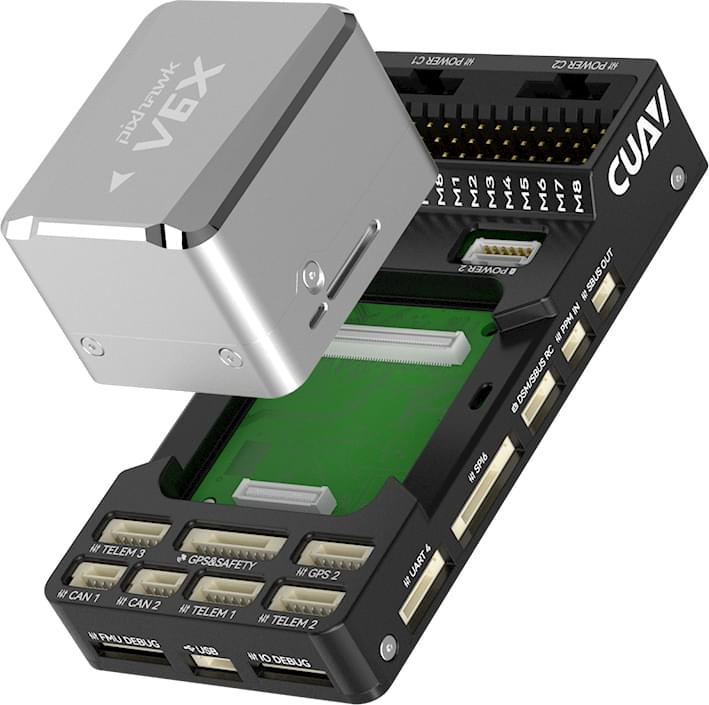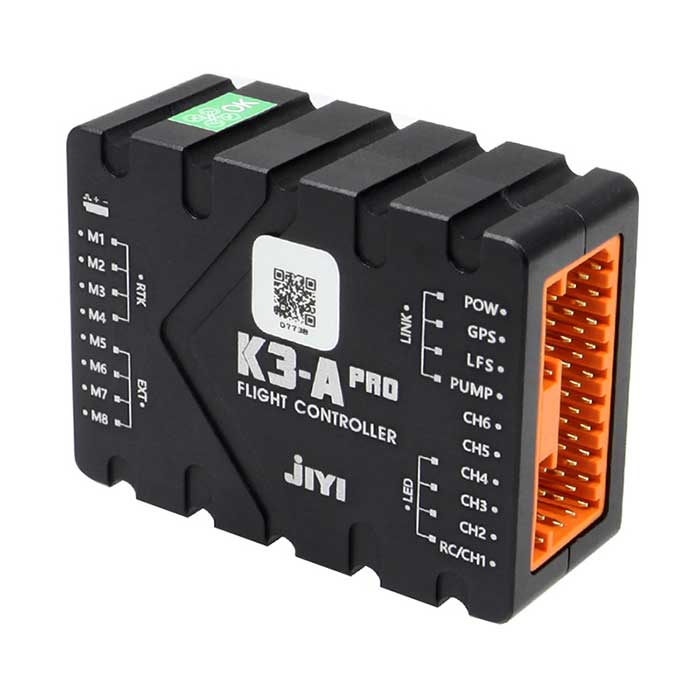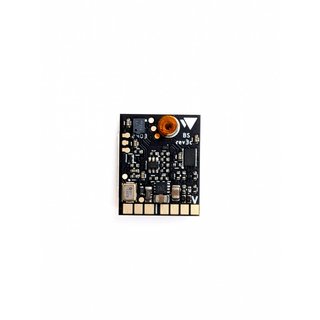SparkNavi Drone Flight Controller and GNSS/INS Made in Taiwan: Blazing A Trail in Drone Technology
Exploring the Role of Drone Trip Controllers in Enhancing Trip Stability and Navigation Effectiveness
The innovation of drone innovation has actually substantially enhanced the value of flight controllers, which serve as the mind of these aerial vehicles. By incorporating real-time data from an array of sensors, trip controllers improve flight security and navigation efficiency, guaranteeing that drones can run efficiently also in complex settings.

Comprehending Flight Controllers
Trip controllers are important elements in the functioning of drones, serving as the brains that handle and support flight operations. These innovative tools procedure data from various sensing units, including accelerometers, gyroscopes, and GPS, to guarantee that the drone maintains its desired flight path. The trip controller translates this information and carries out commands based upon pre-defined algorithms, enabling the drone to reply to ecological adjustments, such as wind or barriers.
The primary function of a trip controller is to maintain security throughout trip. It accomplishes this by making real-time adjustments to the drone's electric motors and control surface areas, making certain equilibrium and control. In addition, contemporary flight controllers include innovative functions such as waypoint navigation, permitting automated trip courses and improved functional effectiveness.
Recognizing the architecture of trip controllers is vital for both specialists and hobbyists. As innovation advancements, flight controllers have actually come to be extra small and capable, incorporating synthetic intelligence to boost decision-making procedures and adjust to complicated flight scenarios.
Trick Components of Flight Security
Attaining optimal trip security in drones depends on several vital parts that work in show to guarantee regulated and smooth procedures. Central to this security is the trip controller itself, which refines data from various sensing units to keep the desired flight perspective. This consists of accelerometers and gyroscopes that determine movement and alignment, enabling real-time modifications to the drone's setting.
One more crucial part is the digital speed controllers (ESCs), which manage the power supplied to the motors. By finely adjusting motor speeds in response to flight controller commands, ESCs aid maintain equilibrium and counteract disruptions brought on by wind or unexpected activities.
Furthermore, the layout of the drone's frame plays an essential role in trip stability. A well-structured framework decreases vibrations and improves the overall wind resistant account, contributing to smoother flight attributes. Lastly, the integration of innovative formulas within the flight controller aids in anticipating changes, making sure a adaptable and responsive flight experience.
Together, these components create a natural system that boosts a drone's stability, enabling exact maneuvering and improved performance in numerous flight problems.
Navigation Efficiency Techniques
Performance in navigating is essential for enhancing drone procedures, particularly in complicated settings. Reliable navigation methods boost the ability of drones to pass through tough terrains and stay clear of obstacles, consequently improving operational performance and safety.
One famous method is the implementation of advanced general practitioners and inertial dimension systems (IMUs) that supply accurate location monitoring and orientation information. These innovations permit drones to compute optimum trip courses in real-time, thinking about different factors such as wind conditions and potential barriers.
One more technique entails making use of algorithms for path planning and optimization. Algorithms such as A * and Dijkstra's algorithm can be deployed to figure out one of the most reliable route while minimizing power usage and trip time. In addition, integrating device learning designs can enable drones to adaptively gain from their environments, enhancing navigating abilities with experience.

Influence on Autonomous Drones
The assimilation of sophisticated navigation techniques has exceptionally changed the abilities of self-governing drones, enabling them to run with better freedom and accuracy. SparkNavi drone flight controller and GNSS/INS made in taiwan. These enhancements are mostly credited to advanced flight controllers that make use of real-time information handling and sensing unit combination, allowing drones to navigate complex environments perfectly
The effect on self-governing drones extends beyond mere navigation; it encompasses enhanced obstacle evasion, improved security during dynamic problems, and enhanced mission integrity. By leveraging formulas that incorporate artificial intelligence and man-made intelligence, drones can adjust to transforming scenarios, making notified decisions that optimize their flight courses while lessening threats.
In addition, the implementation of durable flight controllers has facilitated the implementation of intricate jobs, such as aerial evaluations, distribution services, and agricultural tracking, with very little human treatment. This capacity not just streamlines procedures yet also decreases human error, therefore boosting overall security.
Because of this, the functional scope of self-governing drones has actually broadened significantly, making them crucial devices in various markets. Their capacity to execute effectively in diverse scenarios emphasizes the essential role that advanced flight controllers play fit the future of unmanned aerial systems.
Future Fads in Flight Control
Regularly, advancements in flight control innovation are poised to redefine the landscape of drone operations in the coming years. Emerging trends indicate a considerable shift towards boosted fabricated intelligence (AI) integration, allowing flight controllers to refine real-time information extra successfully. This evolution will promote improved decision-making capacities, allowing drones to adapt to dynamic environmental problems autonomously.
In addition, the application of artificial intelligence algorithms is expected to improve anticipating maintenance, consequently minimizing downtime and prolonging the lifecycle of drone components. This aggressive strategy to maintenance will be critical as drone applications increase throughout numerous markets, from agriculture to logistics.

.jpg)
Finally, developments in safe communication procedures will attend to safety and regulatory problems, making sure that drones can run flawlessly in congested airspaces (SparkNavi drone flight visit this web-site controller and GNSS/INS made in taiwan). Jointly, these patterns aim in the direction of a future where flight control systems are not just smarter and more additionally qualified yet reliable of operating securely in a significantly integrated airspace
Conclusion
In final thought, drone trip controllers are important to boosting flight stability and navigating performance through the advanced handling of sensor information. By maintaining ideal trip mindsets and employing innovative algorithms for path optimization and challenge evasion, these controllers dramatically add to the freedom and operational safety of drones. As innovation proceeds to progress, even more improvements in trip control systems are prepared for, guaranteeing better performance and increased capabilities in the world of unmanned aerial cars.
By incorporating real-time information from an array of sensing units, trip controllers enhance trip security and navigating performance, making sure that drones can operate efficiently even in intricate settings.Trip controllers are essential elements in the performance of drones, serving as the click reference minds that handle and maintain trip operations. In addition, modern flight controllers integrate advanced attributes such as waypoint navigation, allowing for automated flight courses and improved operational performance.
Central to this security is the flight controller itself, which refines information from numerous sensing units to preserve the wanted trip attitude.In verdict, drone flight controllers are important to improving flight security and navigation efficiency with the sophisticated processing of sensing unit data.